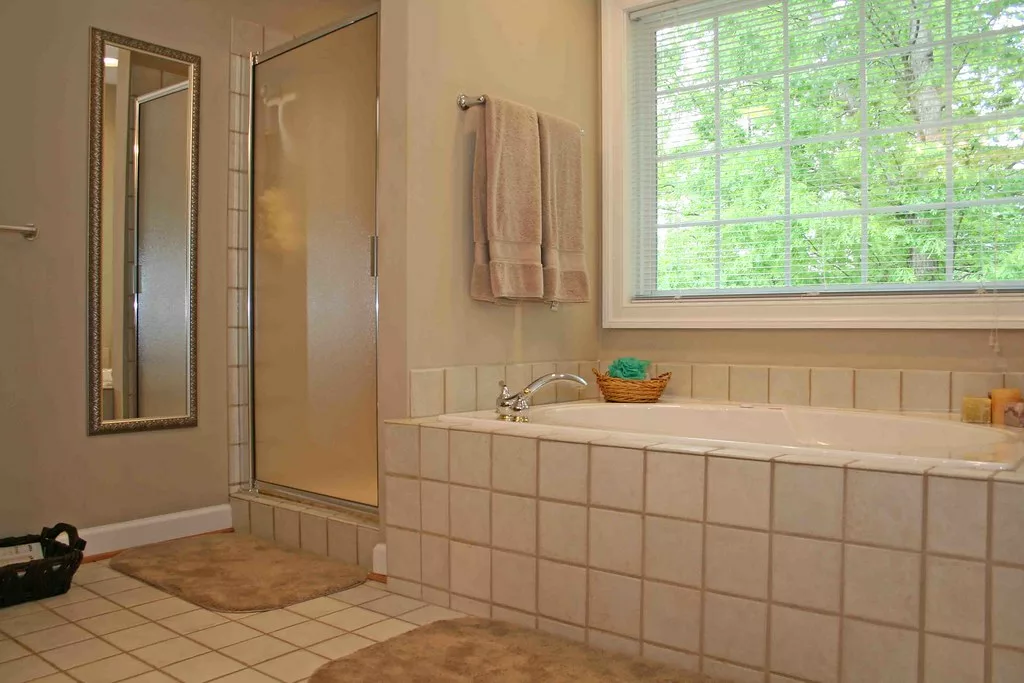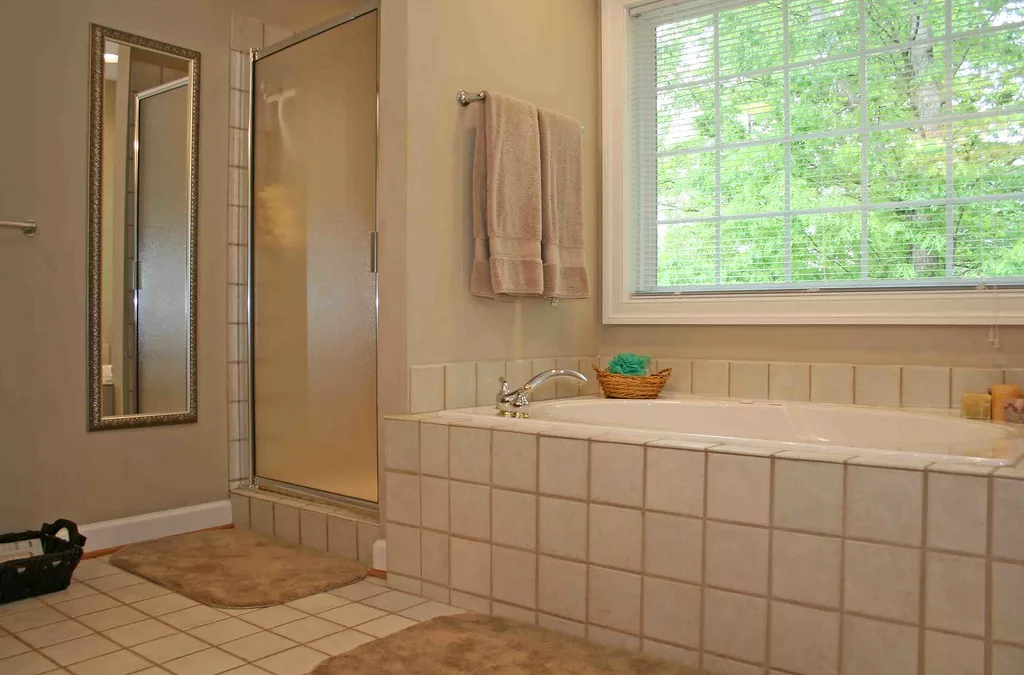Mold is a common problem in bathrooms due to the high humidity and moisture levels. If left unchecked, mold can spread quickly and cause health problems as well as damage to your bathroom surfaces. Effectively removing bathroom mold is essential for maintaining a clean, safe, and healthy home environment. In this comprehensive guide, we’ll cover everything you need to know about mold removal in your bathroom.

Table of Contents
Understanding Bathroom Mold
Before diving into the process of removing bathroom mold, it’s important to understand what mold is and why it thrives in bathrooms. Mold is a type of fungus that grows in damp, dark, and poorly ventilated areas. Bathrooms provide the perfect conditions for mold growth due to the following factors:
- High humidity from showers and baths
- Poor ventilation, especially in bathrooms without windows or exhaust fans
- Leaking pipes or fixtures that create constant moisture
- Porous surfaces like grout, drywall, and unsealed wood that absorb moisture
Common types of bathroom mold include Stachybotrys (black mold), Aspergillus, and Penicillium. These molds can appear in various colors, such as black, green, gray, or white, and often have a fuzzy or slimy texture.
Health Risks Associated with Bathroom Mold
Exposure to mold can lead to various health problems, especially for those with allergies, asthma, or weakened immune systems. Some of the health risks associated with bathroom mold include:
- Respiratory issues, such as coughing, wheezing, and difficulty breathing
- Allergic reactions, including sneezing, runny nose, and skin rashes
- Eye irritation and watery eyes
- Headaches and fatigue
- Aggravated asthma symptoms
In severe cases, prolonged exposure to certain types of mold, like black mold, can lead to more serious health complications. Therefore, it’s crucial to address mold growth in your bathroom as soon as you notice it.
Identifying Mold in Your Bathroom
Before you start the mold removal process, you need to identify the areas affected by mold growth. Mold can grow on various surfaces in your bathroom, including:
- Walls and ceilings, especially near the shower or bathtub
- Grout lines between tiles
- Shower curtains and bathmats
- Windowsills and frames
- Toilet tanks and bases
- Underneath sinks and around plumbing fixtures
Inspect your bathroom thoroughly for any signs of mold growth, paying close attention to damp and poorly ventilated areas. Mold can sometimes be hidden behind wallpaper, under carpets, or behind bathroom fixtures, so be sure to check these areas as well.
Safety Precautions for Mold Removal
Before beginning the mold removal process, it’s essential to take proper safety precautions to protect yourself from mold exposure. Here are some safety measures to follow:
- Wear protective gear, including gloves, goggles, and a face mask or respirator rated for mold spores (N-95 or higher).
- Ensure proper ventilation by opening windows and running exhaust fans during the cleaning process.
- Isolate the affected area by closing doors and covering vents to prevent mold spores from spreading to other parts of your home.
- Avoid touching or inhaling mold directly, as this can cause health problems.
- Dispose of any contaminated materials, such as shower curtains or bathmats, in sealed plastic bags.
Removing Bathroom Mold Yourself
For small to moderate mold growth, you can often tackle the problem using DIY mold removal methods. Here are some effective techniques for removing bathroom mold:
- Vinegar Solution
White vinegar is a natural and effective mold-fighting agent due to its acidity. To use vinegar for mold removal:
a. Fill a spray bottle with undiluted white vinegar.
b. Spray the affected areas generously and let the vinegar sit for at least an hour.
c. Scrub the mold with a stiff-bristled brush or an old toothbrush.
d. Rinse the surface with clean water and dry thoroughly.
- Hydrogen Peroxide
Hydrogen peroxide is another natural mold-fighting substance that can be used to remove mold from bathroom surfaces. To use hydrogen peroxide:
a. Pour 3% hydrogen peroxide into a spray bottle.
b. Spray the affected areas and let the solution sit for 10-15 minutes.
c. Scrub the mold with a brush or sponge.
d. Rinse the surface with clean water and dry completely.
- Baking Soda Paste
Baking soda is a mild abrasive that can help remove mold from grout lines and other porous surfaces. To make a baking soda paste:
a. Mix equal parts baking soda and water until a thick paste forms.
b. Apply the paste to the moldy areas and let it sit for a few hours or overnight.
c. Scrub the surface with a brush or sponge, then rinse with clean water.
d. Dry the area thoroughly.
- Commercial Mold Removers
There are many commercial mold removal products available that are specifically designed to combat bathroom mold. When using these products, always follow the manufacturer’s instructions and safety precautions. Some popular mold removal products include:
a. Tilex Mold & Mildew Remover
b. Clorox Tilex Mold & Mildew Remover
c. RMR-86 Instant Mold & Mildew Stain Remover
d. Concrobium Mold Control
When using commercial mold removers, apply the product to the affected areas, let it sit according to the instructions, then scrub and rinse the surface thoroughly.
Preventing Future Mold Growth
Once you’ve successfully removed the mold from your bathroom, it’s crucial to take steps to prevent future mold growth. Here are some tips for keeping your bathroom mold-free:
- Improve ventilation by running exhaust fans during showers and for at least 30 minutes afterward, or by opening windows when weather permits.
- Fix any leaks in pipes, faucets, or showerheads promptly to avoid excess moisture.
- Use a squeegee or towel to wipe down shower walls and doors after each use.
- Keep bathroom surfaces clean and dry by regularly cleaning and disinfecting them with a mold-inhibiting cleaner.
- Use mold-resistant shower curtains, bathmats, and other bathroom accessories.
- Apply a sealant or caulk to porous surfaces like grout lines to prevent moisture absorption.
- Regularly clean and maintain your bathroom’s ventilation system, including exhaust fans and air ducts.
By following these prevention tips, you can significantly reduce the likelihood of mold growth in your bathroom and maintain a healthier living environment.
When to Call 805 Property Restoration
While many instances of bathroom mold can be handled with DIY methods, there are situations where it’s best to call 805 Property Restoration:
- The mold covers an extensive area (greater than 10 square feet).
- You suspect that mold has spread behind walls, under flooring, or into your home’s HVAC system.
- You or a family member has a severe mold allergy or health condition that may be aggravated by mold exposure.
- The mold returns despite repeated cleaning and prevention efforts.
- You are unsure about the type of mold or the best removal methods for your situation.
We have the professional mold remediation services have the expertise, equipment, and products necessary to safely and effectively remove mold from your bathroom and prevent its recurrence.
Removing bathroom mold is essential for maintaining a clean, healthy, and safe living space. By understanding the factors that contribute to mold growth, identifying affected areas, and using the appropriate mold removal techniques, you can successfully combat mold in your bathroom. Remember to take proper safety precautions, address the underlying causes of mold growth, and implement prevention strategies to keep your bathroom mold-free in the future. If the mold problem is extensive or persistent, don’t hesitate to call a professional mold remediation service for assistance. With the right knowledge and tools, you can win the battle against bathroom mold and enjoy a fresh, clean, and healthy bathroom environment.
